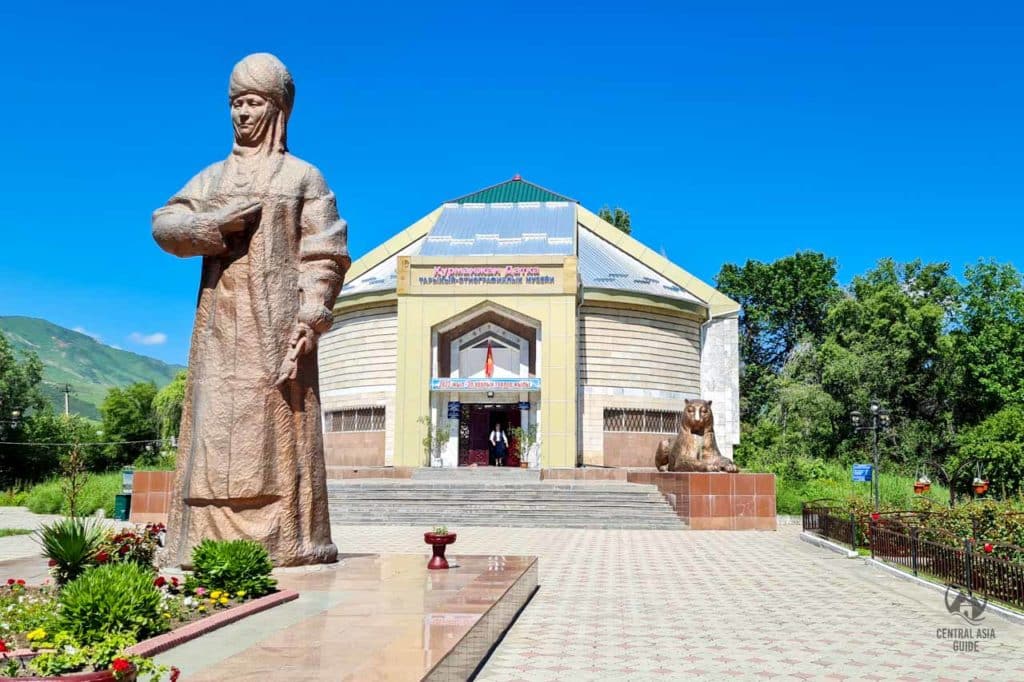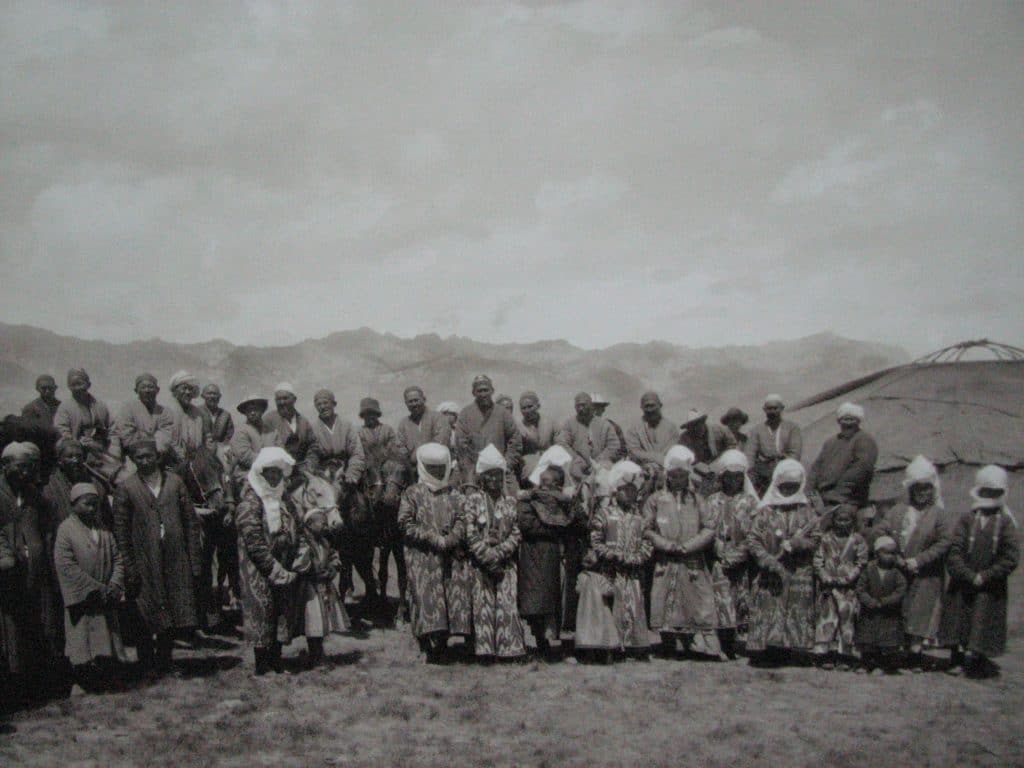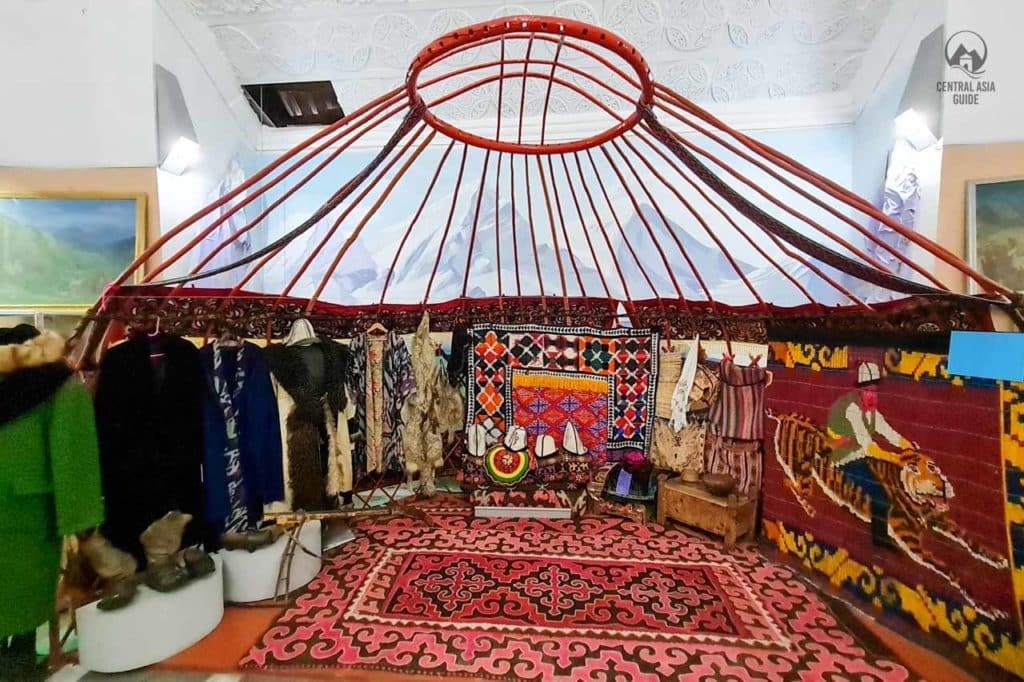Kurmanjan Datka
Kurmanjan Datka - "Queen of the mountains"
While traveling in Kyrgyzstan, it is highly likely that will see statues to Kurmanjan Datka or streets named after her and even her picture in the Kyrgyz 50 som bank note. Kurmanjan Datka is one of the rare women heroes in Central Asia and she is known by many names, such as: “Alai Queen”, “The Queen of the South”, “Mother of the Nation” and “Queen of the Mountains”.


The reason why Kurmanjan Datka (translated as “Queen” from Kyrgyz, “Dadhoh” in Persian means a “Righteous ruler”) is such a renowned woman of history, is that in the 19 century, she was able to unite the Kyrgyz tribes and to negotiate peace with the Russian Empire and thus saving countless of lives and at the same time agreed to sacrifice her own family members to do so.
She had the title of Datka and was therefore recognized as a ruler of her region in the Kokand Khanate and the Bukhara Emirate. She also has her own museum in Kichi Alay, on the way to Chon Alay (large Alai) which tells something of the respect that she still enjoys among the Kyrgyz people
Life of Kurmanjan Datka
Kurmanjan Datka was born in 1811 in Kichi Alai. Her father Mamatbay was from the Kyrgyz Mangush clan and she grew up in a nomadic family in the Alai mountains. She was an excellent horse rider and had a strong character together with features fit for leadership.
As usual at the time in Kyrgyzstan, she was to be wed to a man much older than her, who she did not know. In order to avoid this, she fled to neighboring China from his new family the night before her wedding and returned later back to her own family. Such an action is considered unacceptable even today in Kyrgyzstan and in the 19th century it was a major assault against the patriarchal tradition.
She always had this courage and independent opinion which was not considered as a trait for a girl. Kurmanjan’s choice to marry a man she loved, was also not the custom, although in her case the affection was returned by Alymbek Datka (husband to be) as well.

The husband of Kurmanjan, Alymbek was an intelligent noble who held the unity of the Kyrgyz people and defended the independence of the Kokand Khanate from tsarist Russia. Alymbek Datka was the governor of the Andijon Province in the Kokand Khanate and got the position of “atalyk” (regent) of the 12-year-old Shah Murad, the Khan of Kokand in 1862, just before his own assassination.
After her powerful husband’s assassination, Kurmanjan became Datka, a proxy of power approved not only by the Kokand khan, who ruled lands that included Osh and Kurmanjan’s homeland in the Alay Mountains, but also by Muzaffar, the emir of Bukhara himself. Emir of Bukhara ruled a vast empire that included the southern lands of Kyrgyzstan and made Kurmanjan officially Alymbek’s heir.


Kurmanjan Datka quickly gained the reputation of a wise ruler, successfully settling all tribal disputes of the Alai Kyrgyz. However, by that time Russian tsar had already conquered the lands of Northern Kyrgyzstan and was proceeding towards the south. Kurmanjan’s husband had fought against the tsar’s powerful army and some of her children did as well. After many defeats and losses, Kurmanjan was wise enough to persuade the Kyrgyz people not to doom themselves to unnecessary death against the overpowered Russian Army.
However her son continued to fight the Russians and as a part of the peace treaty, he was delivered as a prisoner to the enemy and was sentenced to death. According to some versions of the story, Kurmanjan even attended the execution of her son. It was Kurmanjan’s message to her people not to step in to fight. Russians treated Kurmanjan with respect and even gave her the title “tsaritsa Alaia” (queen of the Alai).
She was yet “one of the tools” to persuade the other Kyrgyz people in that region to live in peace within the framework of colonial Russia.
In the summer of 1906, Colonel Karl Gustav Mannerheim (later President of Finland) traveled to the territory of modern Kyrgyzstan, on his way to China, via the Alain Mountains with the mission of a Russian secret intelligence officer. In Osh and Alai, he took some unique photographs, including the latest photographs of Kurmanzhan Datka. Mannerheim found her in old age 94, only six months before her death. The photo in the Kyrgyz bank note is from this unlikely encounter.

Source: kloop.kg


More about Kyrgyz people, culture and interesting sights
Page updated: 30.11.2022